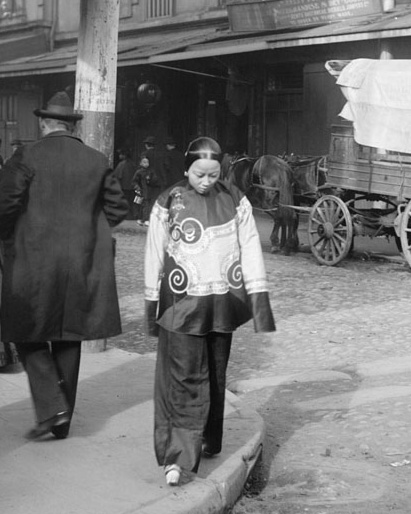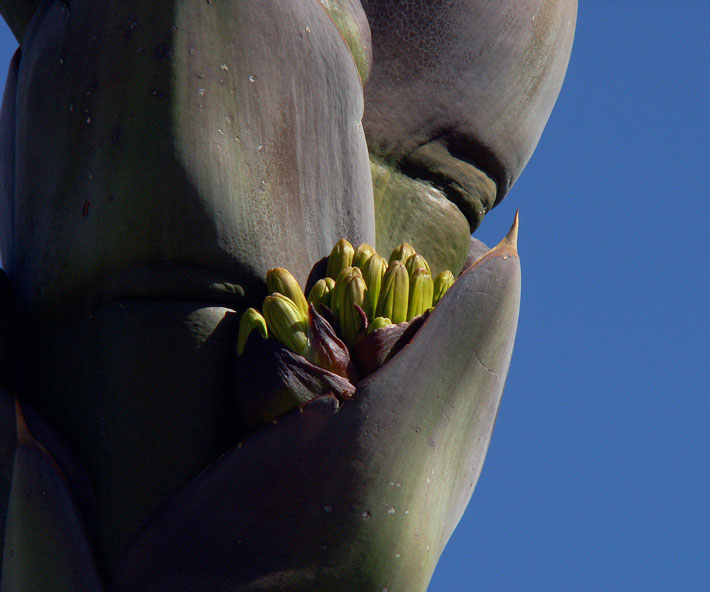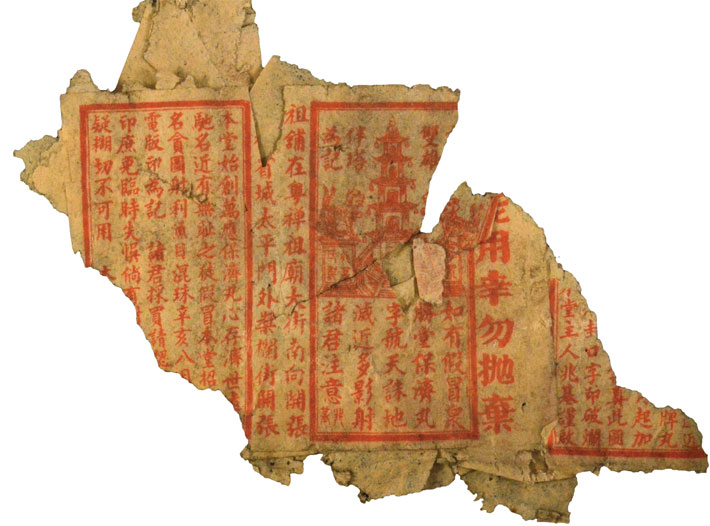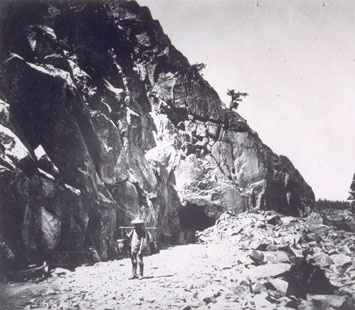Culture
May/June 2014
Nineteenth-century Chinese immigrants were usually regarded with deep suspicion by Euro-Americans. Their goods were considered strange, their women immoral, their neighborhoods dangerous, their food unsavory. The first studies of their material culture in the 1970s and 1980s described early Chinatowns as insular, traditional, and resistant to change. These early archaeological studies focused on the idea, long abandoned by historians, of acculturation—that is, how much the Chinese were assimilating American culture. “I think that the way we thought about cultural change was a little narrow,” says Barbara Voss, a Stanford University archaeologist who leads the study of the Market Street Chinatown collection in San Jose.
Archaeological thinking has since evolved, and the relationship between Chinese immigrants and American culture is now known to be much more than a one-way street toward “Americanness.” Chinese-American culture was shaped by tradition, connections to mainland China, institutional segregation and racism, local circumstances, and a complex process of adaptation and selective accommodation.
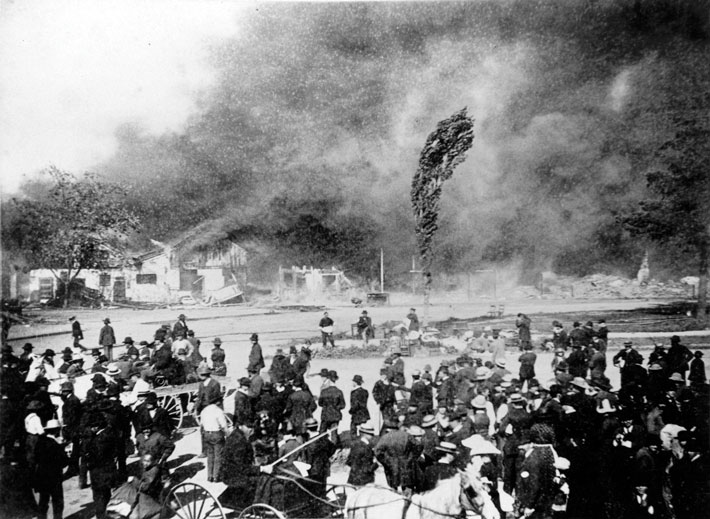 Examples of this complexity come from a number of projects. Market Street Chinatown in San Jose was destroyed in an arson fire in 1887. Anti-Chinese sentiment was high, and arson, beatings, and even murder were not uncommon. The burn layer preserved the site, which was excavated about a hundred years later. The collection, however, was packed away, only to be rediscovered in a storage room in 2001 by archaeologist Rebecca Allen of private cultural-management firm ESA—all 451 boxes of it—who brought it to Voss’ attention. Analysis of the collection (some 50,000 artifacts to date) continues, but has so far revealed a community that was hardly isolated. A rich mixture of Asian, British, and American household goods shows that though it was an ethnic neighborhood, its borders were porous, and its population diverse, mobile, and adaptable. “It’s very clear culture is not a zero-sum game,” Voss says. “People were not choosing between tradition and innovation.”
Examples of this complexity come from a number of projects. Market Street Chinatown in San Jose was destroyed in an arson fire in 1887. Anti-Chinese sentiment was high, and arson, beatings, and even murder were not uncommon. The burn layer preserved the site, which was excavated about a hundred years later. The collection, however, was packed away, only to be rediscovered in a storage room in 2001 by archaeologist Rebecca Allen of private cultural-management firm ESA—all 451 boxes of it—who brought it to Voss’ attention. Analysis of the collection (some 50,000 artifacts to date) continues, but has so far revealed a community that was hardly isolated. A rich mixture of Asian, British, and American household goods shows that though it was an ethnic neighborhood, its borders were porous, and its population diverse, mobile, and adaptable. “It’s very clear culture is not a zero-sum game,” Voss says. “People were not choosing between tradition and innovation.”
During excavations in Sacramento, Adrian Praetzellis of Sonoma State University found a specific instance of how the Chinese selectively, even strategically, adopted American goods. Chinese agents—bilingual businessmen who worked with Americans and helped Chinese laborers find work—were common in urban Chinatowns. In what was once the home of an agent, Praetzellis found both Chinese ceramics and British pieces, especially large serving dishes. According to historical sources, agents held open houses with local businessmen and politicians to show that Chinatown was a reliable place to conduct business. At these banquets, Chinese food was served but—as Praetzellis’ finds show—probably on British servingware. The British ceramics were a nod to guests rather than a sign of assimilation. “It had little or nothing to do with culture change itself,” says Praetzellis. “It had to do with intelligent manipulation of what could be a difficult, even dangerous, situation.” Interestingly, the ceramics include pieces of willow pattern, an iconic nineteenth-century British print that itself had been adapted from a native Chinese pattern and mass-produced in England.
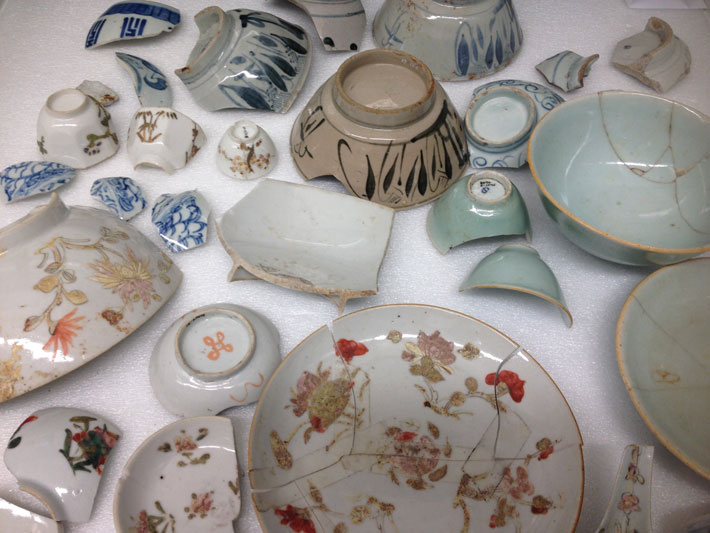 Euro-American culture was not the only influence on Chinese communities. At work camps, laborers from different ethnic backgrounds often lived and worked side by side. At a cannery site in Canada, for example, Doug Ross of Simon Fraser University is examining the differences and similarities between Chinese and Japanese work camps. Furthermore, many neighborhoods considered “Chinatowns” were also home to other marginalized or segregated populations—such as other Asians, African Americans, Native Americans, Portuguese and German immigrants, and even white prostitutes—who found safety, community, a functional economy, and less discrimination or judgment.
Euro-American culture was not the only influence on Chinese communities. At work camps, laborers from different ethnic backgrounds often lived and worked side by side. At a cannery site in Canada, for example, Doug Ross of Simon Fraser University is examining the differences and similarities between Chinese and Japanese work camps. Furthermore, many neighborhoods considered “Chinatowns” were also home to other marginalized or segregated populations—such as other Asians, African Americans, Native Americans, Portuguese and German immigrants, and even white prostitutes—who found safety, community, a functional economy, and less discrimination or judgment.
